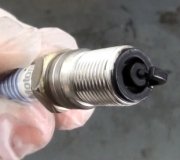First let me verify I'm in the right fuse box. The first drawing shows the location of the Junction Block, down by the right kick panel. If that is correct, verify I'm looking at the right fuse, # 20, a 15-amp as you said. That's in the second drawing.
The third diagram is an expanded section that includes fuse # 20 and the three things it feeds, which you also already found. There are two 12-volt feeds to the radio, one switched with the ignition switch, and this one that's for the clock and station preset memories. My experience at the Chrysler / Dodge dealership and with years of repairing their radios, is that memory circuit has almost always been tied in with the interior lamps circuit as that also always stays powered up. According to this diagram, your interior lights are on a totally different fuse and circuit. Please verify your interior lights still work to avoid confusion on my part.
If you have the original radio and it works properly, that should not cause this fuse to blow. If it doesn't work properly, unplug the gray 7-pin connector. The other two modules are likely to also have two 12-volt feeds. If you have them out already, just unplug all their connectors for now.
I don't see any reference to this fuse feeding anything else, so if the fuse still blows, it is likely to be due to a grounded wire or, given the sad location of the Junction Block, corrosion build-up from road salt.
Next, I'm including drawings that show how to connect the bulb to replace the fuse. This is very basic and is intended for anyone else researching this topic. Rather than pick out bits and pieces, posting everything ensures I don't forget or skip over something.
Assuming the short is still present with the three things unplugged, my recommendation would be to remove the Junction Block and check the wires on the back side, especially if there are rust holes on the body in that area. I have a very rusty '88 Grand Caravan with a large rust hole through the "B" pillar, right behind the driver's seat. In Wisconsin, they throw a pound of salt onto an ounce of snow. As a result, that salt got into a body connector for the many interior lights. That connector was only there for ease of assembly on the assembly line. My students cut it out and just spliced the wires together to get the rear lights working. That corrosion caused an "open" circuit, meaning it had a break. That is the opposite of a short circuit like you have. Two things to look for first on the back of your Junction Block are a large mass of corrosion between two or more points, and wires with deteriorated insulation that are now touching. Keep in mind you have a second model with this problem, so think in terms of things that are likely to occur the same way on multiple vehicles.
Let me know what you find up to this point.
Images (Click to make bigger)
Saturday, March 4th, 2023 AT 7:07 PM











